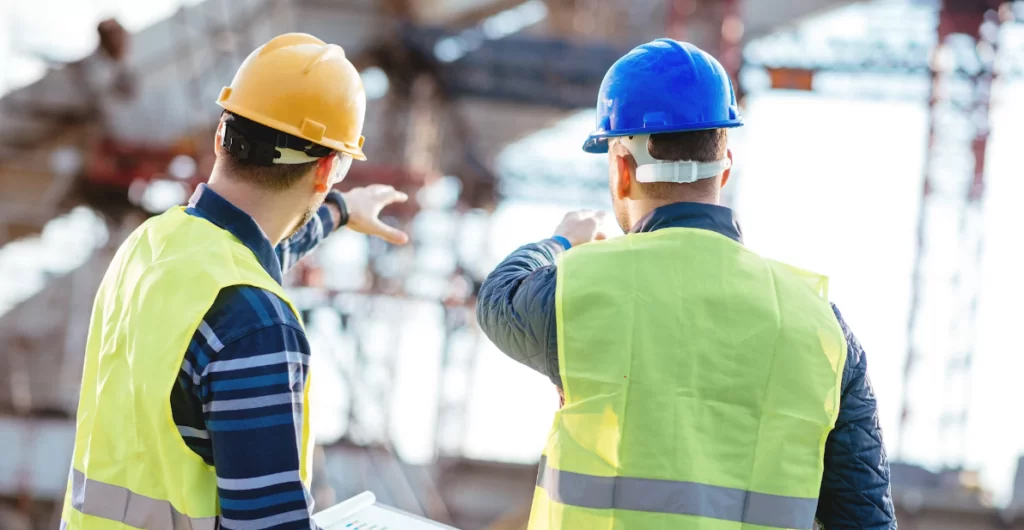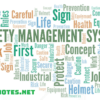
7 Safety Facilities Contractors Should Ensure
If you’re a contractor, safety should be at the top of your list when you’re working on a job site. Every job is different, and the hazards you can face vary significantly. That’s why it’s essential to know what Safety Facilities should be implemented to ensure your crew and site stay safe—no matter the job.
From proper training to having the correct personal protective equipment (PPE) readily accessible to potentially life-saving tools, there are many Safety Facilities contractors should be aware of. Working on construction projects is difficult and can be more challenging, especially if you live in a state like Texas, where harsh weather makes it difficult for workers to work constantly without a place to rest and recuperate. According to the New York Times, there was a loss of about 10 percent of jobs in a town in Texas named Pecos, mainly due to the town’s isolated location, several hundred miles from any major urban center in a flat desert landscape with fewer options for workers to seek shelter in. With such worrying stats, providing comfortable lodges to the workforce is imperative, which can help keep workers motivated and productive. This is where you need Pecos lodging to help out. So get in touch as soon as you can.
You should be aware of a few more safety measures, so read on to understand how you can keep everyone safe while staying productive!
Fire Suppression Systems
Fire suppression not only helps to protect lives and property in the event of a fire, but it can also save you money in the long run.
Fortunately, there are many different types of fire suppression systems available. For example, fire sprinklers are a popular option that is well-known for their reliability and effectiveness. They operate autonomously and detect smoke to quickly respond accurately to extinguish flames before they become too dangerous.
You should also consider other fire suppression measures, such as wet chemical systems, CO2 suppression systems, and dry chemical systems, which are all equally effective at putting out fires in specific circumstances. Ensure you understand which type of system is most suitable for different areas of your workspace.
Emergency Lighting
You, as a contractor, need to be sure that emergency lighting is in place and working correctly. When an emergency occurs, and the lights go out, emergency lighting ensures people can quickly and safely make their way to an exit with just enough illumination.
This is why you should take the following steps during inspections:
- Make sure all emergency lights are installed in the correct locations.
- Check that these lights work consistently.
- Replace any damaged or burned-out lamps.
- Test all lighting before every inspection to ensure functionality.
- Verify that lumens (the measure of visible light) are sufficient to light up a room or serve as an evacuation guide.
Personal Protective Equipment
When working on-site or in the office, ensuring that all employees and contractors have the proper Personal Protective Equipment (PPE) is crucial. Not only is it a legal requirement—but it will also help protect them from any unexpected hazards.
Here’s a list of must-haves:
- High visibility vest: this is important for safety and will ensure everyone can be seen regardless of the lighting conditions.
- Safety shoes or boots: to protect the worker’s feet from hazards.
- Eye protection: this could be goggles, safety glasses, or face shields, depending on the job requirements.
- Protective gloves: for any equipment handling as well as chemical spills.
- Hearing protection is essential if noise levels exceed 85 dB(A) over 8 hours.
- Respirable dust protection masks are essential for workers exposed to respirable hazards such as dust, wood particles, and more.
Site Inspections and Risk Assessments
Regular site inspections and risk assessments should be part of your plan. These enable you to identify potential hazards and understand the risks associated with the work at hand.
Site Inspections
First, regular site inspections can help keep workers safe by identifying potential hazards and preventing accidents or injuries on-site. Construction projects like new home builds to create Cougar Homes for sale should involve thorough inspections before any work begins. It’s best to do these regularly to quickly identify and address any new issues before they cause a problem. During your inspections, check for any new tools or materials on-site and any signs of damage or wear from heavy machinery or tools.
Risk Assessments
When it comes to risk assessments, it’s essential to document all of your findings; this helps you identify what risks must be addressed and create a plan for managing them. Risk assessments are also beneficial when planning future projects – this way, you will have a better understanding of what needs to be done if you ever find yourself in need of re-evaluation due to changes in the workplace.
Emergency Response Systems
In case of an emergency, having an effective emergency response system in place can help ensure everyone is evacuated promptly. This could be as simple as having a designated meeting point or providing emergency contacts to your team members.
With suitable safety systems, you can ensure your crew is well-prepared for any emergency. So equip your team with these components and update them on any changes or new information.
Electrical Safety Standards
When you’re a contractor, electrical safety is paramount. After all, electricity can be hazardous if it’s not handled correctly. So, here are some essential electrical safety facilities that you should keep in mind:
GFCI Protection
Ground-Fault Circuit Interrupter (GFCI) protection is an essential safety facilities for any project. It’s designed to monitor the current flow and will shut off the power if an imbalance is detected—which could indicate that there’s a potential shock hazard present.
Circuit Breakers
Circuit breakers are another vital facilities for preventing overloads. They will trip when the load exceeds their rating and can easily be reset by flipping the switch off and then back on again – providing constant protection against over-currents.
Arc-Fault Circuit Interrupters (AFCIs)
AFCIs work by detecting dangerous arcs in a circuit and disconnecting the power until the hazard has been resolved – meaning you’ll never have to worry about exposed electrical wiring again!
First aid
It’s essential to ensure that all your worksites are prepared for potential medical emergencies by having basic first-aid equipment available. This should include bandages, antiseptic wipes, gauze pads, and any prescription medications or specialized equipment necessary for a particular job.
Having someone on-site trained in basic first aid and CPR is also a good idea. This individual can help if an employee is injured or becomes ill during the workday, potentially avoiding a more complex situation.
Conclusion
At the end of the day, workplace safety should be a priority for any contractor. Investing in high-quality protective gear and up-to-date equipment will go a long way in reducing the risks associated with any job. With the seven essential safety facilities outlined in this post, you can rest easy knowing that your team is safe and secure while on the job. Not only will these Facilities protect your employees, but they’ll also ensure that your projects stay on schedule and within budget.


